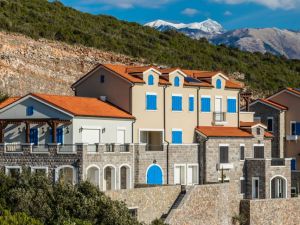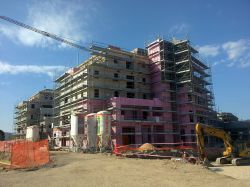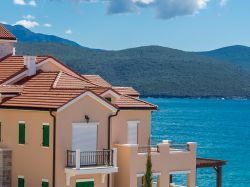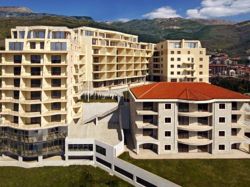
Making the façade is a demanding and important job. In this building process your facility gets final attractiveness, quality and visual identity. Façade is the face of any building construction. Development of construction also meant development and techniques used to make a façade as well as materials that manufacture façade. Besides the visual experience, façade serves as an object protection against external influences. Quality façade must be able to cope with all weather conditions, extreme temperatures, snow, rain or possible natural disasters. It has been proven that more than 30% of heat is lost through the outside walls. The most important characteristics that dictate the quality of the façade are the choice of materials and method of manufacture. When selecting the façade, care should be taken about the object type. In addition, aesthetic requirements and material resources are the factors that significantly influence the selection of the façade. Due to the high cost of heating, strict laws and regulations for different systems are imposed for different thermal insulation of residential and commercial facilities.
They differ in the following types of façades:
* Contact - DEMIT façades
* Ventilated façades
* Wooden façades
* Glass façades
* Stone façades
* Metal façades
* The concrete façades
External wall insulation is the most common type among various thermal protection systems, where insulation is directly affixed to the wall of the building on the outside. The best known representative of this type are EPS façades, or façades made of styrofoam, neopor or styrodur.
Expanded polystyrene, EPS, is a material consisting of polystyrene cells that are connected in common homogeneous thin, air-filled cavities. It is made by expansion of polystyrene and has an affordable price compared to other types of façades. EPS is the only plastic material that can be completely recycled and is thus environmentally friendly. In home practice it is often called styrofoam, alluding to the eponymous brand of German manufacturers and which has developed this material – BASF company.
Neopor is a newer insulating material and production process is identical to EPS, made of expanded polystyrene, but with the addition of carbon fibers. It is isolated by means of air, but carbon fibers provide it with up to 20% higher quality and less loss of heat. During the manufacture of thermal insulation Neopor is preferred when compared to EPS, because it uses thinner plates.
Extruded polystyrene - XPS is obtained by compression of polystyrene and its density, depending on the manufacturer, ranges from 30 to 36kg / m3 (there are products with special characteristics of density of this material up to 42kg / m3). Thanks to the production process, polystyrene is compressed and the result is a closed cell structure which gives excellent thermal and mechanical properties, as well as water resistance. In our practice it is often called XPS styrofoam, also the name of the BASF company's product (Styrodur).
Contact or heat insulation façades are the most represented in our region. The main characteristic heat insulation façade is flexibility - good thermal insulation and protection from precipitation as in the hottest and in coldest regions. The final decorative layers are water resistant unlike those materials that were used for building façades in the past. There is no chance for fungal appearance in residential or commercial area. Heat insulation can be run with different thicknesses of polystyrene and a plinth is also determined in according to set styrofoam.
Heat insulation characteristics are:
* Large savings in heating costs
* Reliability and durability
* Possibility of choosing various thicknesses of thermal insulation
* The pleasant climate in the area
* A wide selection of decorative finish coats
The stone façades are the part of the lining of heavy elements and are made of natural or carved cut stone - as individual pieces or finished parts in the form of walled panels. Stone, as one of the oldest building materials, is closely linked to the very development of the construction industry. The use of stone has been actualized again with the emergence of new construction lines. The result of this application is reflected in modern breeding processes and stone processing, which is used in particular for cladding. With the introduction of industrialized building method, with application of modern machines, the rational use of materials, a high level of final processing and constant quality are being achieved. Usage of modern methods of processing stone results in final products which enable efficient and precise performance, which further contributes to the high aesthetic quality. Façades made of such elements are easy to maintain and repair. Stone façades are definitely one of the more expensive ways of finishing in view of the additional costs of insulation, requirement of high quality of the stone, the specific gravity of materials, labor costs when exploitation, processing, installation and transportation. The façades made of quality stone are suitable for maintenance.



